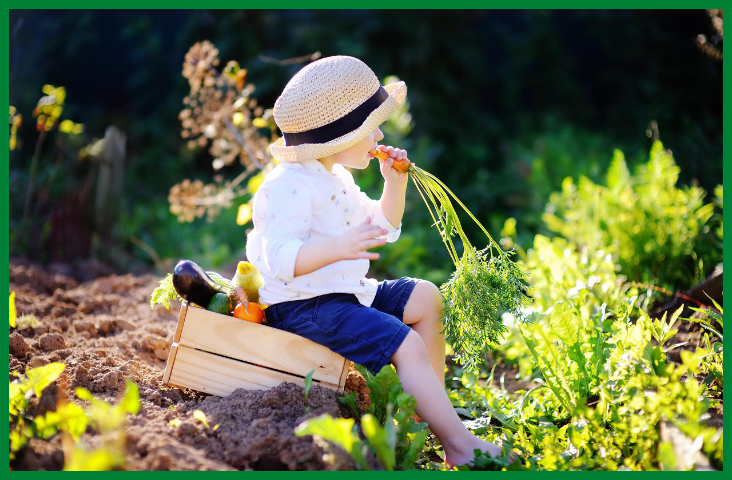
My kids don’t like fruit and veg. What can I do?
As a dietitian, I think the most common question parents ask me is how to get their children to eat vegetables, and sometimes also fruit. There are a number of reasons why this can be tricky. Veggies can have a slightly bitter taste, and scientists have suggested that young children may be programmed by evolution not to like them. This would have prevented them from eating bitter poisonous plants in earlier times. Some young children also need to try a new food quite a few times before they decide if they like it – the rule of thumb is to offer a food on ten occasions before giving up. And in these days of more processed foods children may taste many super-sweet and salty treats; the more subtle flavours of fruit and vegetables may not seem so enjoyable in comparison.
Don’t despair though; there are many ways to make fruit and veg more appealing and to sneak them in without kids noticing. You’ve probably tried some of my suggestions already, but hopefully, you’ll find a few new ideas to help your little ones fit in some extra fruit and veg. It’s well worth persevering – fruits and vegetables are a fabulous source of a wide range of vitamins and minerals, as well as fibre, and an essential part of your child’s healthy diet.

Involve the kids
Children are usually more keen to eat food they’ve helped prepare, choose or even grow. You could:
- Ask your kids to choose a new fruit or vegetable when you go shopping
- Get them to help wash, prepare or serve the food
- Draw a picture of their meal, including the veg or fruit, on a paper plate
- Ask your little one to draw a picture and describe the fruit or veg to you. They could make it into a funny creature, like a fuzzy kiwifruit monster!
- Grow an easy and fast-growing vegetable, such as beans, then eat them together This can even be done in a large yogurt container on a sunny window sill – you don’t need a garden.
Be persistent
With a little imagination, fruit and vegetables can fit into any meal or snack; vegetables aren’t just for the dinner table. Try avocado on toast at breakfast, tomato, and cheese on crackers at morning tea, tuna, and sweetcorn sandwiches at lunch, and hummus with carrot sticks (cooked for younger children, to soften them) for afternoon tea.
It can help to serve the fruit or veg your child doesn’t eat next to foods they already like. They’ll probably be more likely to have a taste. And if you allow them to have just one nibble, rather than insisting they eat the whole serve, they’ll also be more likely to give it a go…and maybe they’ll even like it.

Talk the talk and walk the walk
Studies have shown that telling children to eat their greens is NOT just parents wasting their breath – our kids actually do eat more vegetables if we tell them to. However, it’s not just what we say but also what we do that matters. It’s been found that if children see parents eating their fruit and veg, the kids are more likely to eat them too. Family meals also help – UK research revealed that children from households who ate together daily as a family consumed nearly 2 more fruit and veg serves per day than those from families who didn’t eat together.
As a reminder, the recommendation is that mums, dads, and carers eat 2 serves of fruit and at least 5 of vegetables each day. If you think your intake could use a boost too, maybe you could think of some fruit and veg-rich dishes you and your child could enjoy together.
Make it fun
From silly foodie faces to mini-trees for dinner, ideas to make fruit and veg more fun are limited only by your imagination:
- My kids love eating food on sticks. If yours are old enough, try fruit or veg kebabs. Veg kebabs can be brushed with oil and grilled, baked, or barbequed, or you can serve many vegetables raw. Older children can make the kebabs themselves, but younger ones will need to avoid the sharp kebab sticks.
- Make fun shapes – try different coloured melon balls, stacked ‘blocks’ of pumpkin and potato, and faces made of cherry tomato eyes and a capsicum smile. Maybe arrange foods around the plate in alternating colours. Or give your little ones a plate of multi-coloured veg chopped into different shapes and ask them to make their own pictures and patterns. Do this just before dinner, when kids are hungriest, and some veg are sure to disappear!
- Add a dip or spread. Hummus, mashed avocado, and salsa make great dips for veg, as yogurt does for fruit. Or fill celery sticks with cream cheese. I still remember my mum topping these with a line of sultanas and calling them ‘ants on a log’ – we loved it!
- Base puddings around fruit, like apple crumble; or make parfaits of fruits, such as berries, layered with yogurt and crunchy muesli – older kids will enjoy making this themselves.
- Frozen fruit on an ice cream stick – banana and rockmelon chunks work well
- Use silly names – mini-trees are much more fun to munch than broccoli, especially if your little one is really a T Rex in disguise.

Play hide and seek
Some kids are harder to convince than others. If yours are really resistant to your creative vegetable presentations, you may need to get a bit sneakier:
- Tomato-based pasta sauces are a great place to hide all sorts of vegetables, from mushrooms to capsicum to pumpkin – simply blitz them in until you can’t see the individual veg anymore
- Add grated apple, berries, or mashed banana to pancakes, cakes, and muffins
- Try finely grated carrot and zucchini and very finely chopped mushrooms in homemade burgers, meatballs, or Bolognaise sauce
- Add vegetables (frozen ones are fine) to homemade pizza and hide them under a blanket of cheese
- Beans, lentils, or finely chopped veg can be added to casseroles or stews. Finely grate the vegetables or blitz beans or veggies in a food processor or blender first if you have the sort of kids who will pick them out.
How do I fit them in on a busy day?
We all have days when we’re battling a huge to-do list, and the thought of making a smiley face with grapes and apple slices will just make us groan. At the same time, we can get weighed down by guilt if we feel our kids’ nutrition is suffering. Here are a few tips for fitting in some extra fruit and veg serves with minimum effort:
- Keep a stash of fruit canned in juice and frozen fruits and vegetables for when time is tight. They have a similar nutritional content to fresh, and frozen veg is very easy to microwave to add some ‘rainbow’ colour to a dinner plate. Frozen berries can be tossed through yogurt for an easy dessert.
- Vegetables are sometimes more popular as soup – homemade or ‘fresh’ shop-bought ones are better options if possible. If making a batch of soup, freeze some in meal-sized portions for a quick dinner.
- Enjoy half a cup of 100% juice or smoothie (any more than this and it’s just another sweet drink though)
- Serve fruit tinned in juice for dessert
- Slice banana or grate some apple onto breakfast cereal or porridge

I hope some of these ideas will work for your family – if mums, dads, and carers enjoy more fruit and veg too, that’s a bonus! If you’re not sure how much your little ones should be aiming to eat each day, check out the link below. You’ll also find even more ideas to make these healthy foods a delicious part of your day.
Note for younger children: Some uncooked fruit and vegetables can be a choking risk. Check the guidelines on this website, and remember never to leave a young child unattended while they’re eating: https://www.health.qld.gov.au/news-alerts/news/baby-child-choking-first-aid-signs-prevention-risks
©Fiona Hinton 2022
MEDICAL DISCLAIMER: Please note that this blog is for general information only, and should not be taken as a substitute for qualified medical advice. Please discuss medical issues with your child’s doctor before taking any action.
About Fiona: Fiona Hinton is a dietitian, but describes herself as a nutrition translator, taking the science of nutrition and translating it into foods we love to eat, to nourish both body and soul. She has over 20 years of experience as a dietitian, working in a wide range of areas from hospital wards to running her own private practice. Fiona has a special interest in children’s nutrition. As a mum of three school-age boys, she has first-hand experience of the issues associated with feeding young children, such as weaning and fussiness. Fiona specialises in real-life strategies and practical suggestions to convert nutrition advice into food kids will eat. Fiona has collaborated on several books, including one with best-selling children’s food writer Annabel Karmel, as well as training childcare staff in children’s nutrition.


